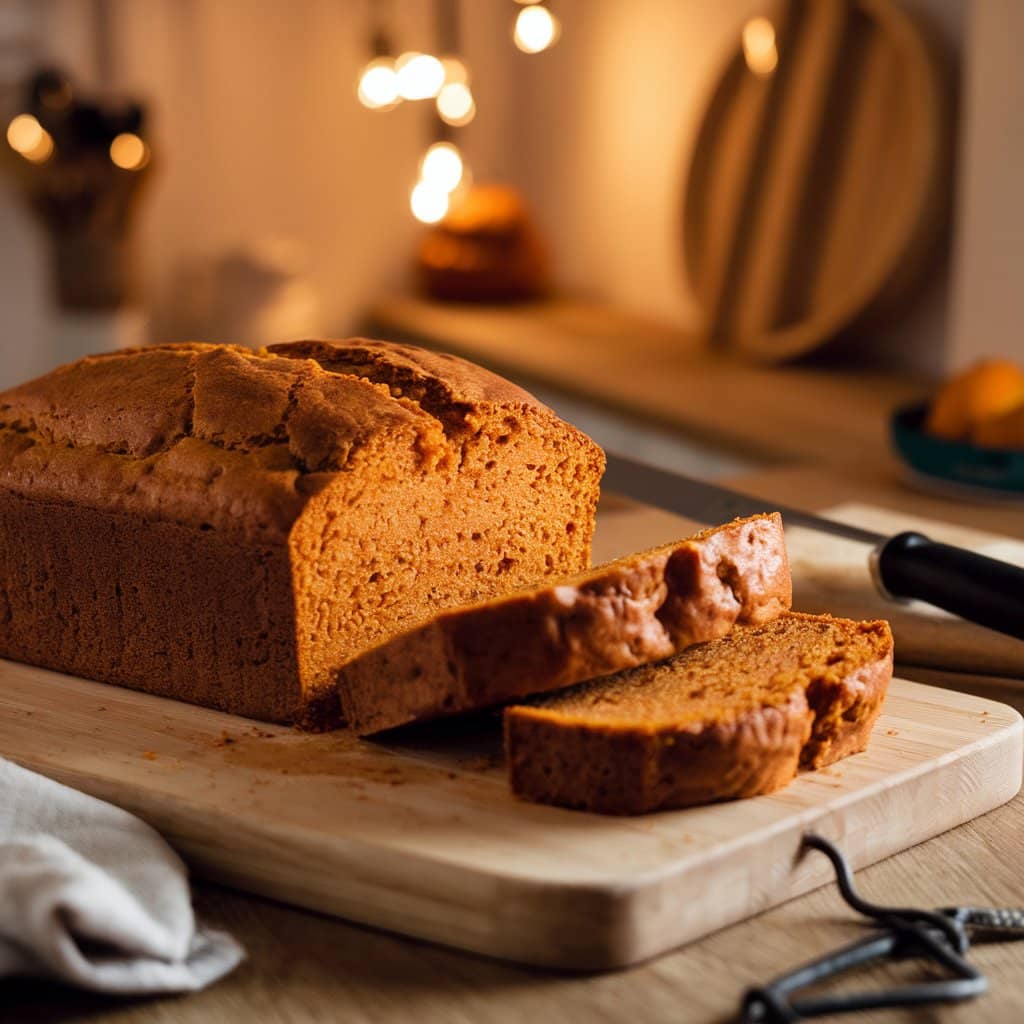Pumpkin bread is the ultimate fall treat—moist, spiced, and oh-so-comforting. But let’s face it, nothing ruins the joy of baking like finding your loaf has turned into a dry, crumbly mess or, worse, grown a fuzzy green coat. So, how long will pumpkin bread stay fresh? And what can you do to keep it tasting delicious for as long as possible? Let’s dive in and uncover everything you need to know!
Table of Contents
Introduction to Pumpkin Bread Freshness
Why Pumpkin Bread is a Fall Favorite
Pumpkin-bread is like a warm hug on a chilly autumn day. It’s packed with cozy spices like cinnamon, nutmeg, and cloves, and its moist texture makes it irresistible. Whether you enjoy it for breakfast, as a snack, or as a dessert, pumpkin-bread is a versatile treat that brings joy to every bite. But here’s the thing: its freshness doesn’t last forever. Understanding how to store it properly can make all the difference between a delightful treat and a disappointing one.
The Importance of Knowing How Long Pumpkin Bread Stays Fresh
Why should you care about how long pumpkin-bread stays fresh? Well, for starters, no one wants to waste food. Plus, fresh pumpkin bread tastes infinitely better than stale or spoiled bread. By learning the shelf life and storage tips, you can enjoy your pumpkin-bread at its peak flavor and avoid any unpleasant surprises.
How Long Does Pumpkin Bread Stay Fresh?
The freshness of pumpkin-bread depends on how and where you store it. Let’s break it down:
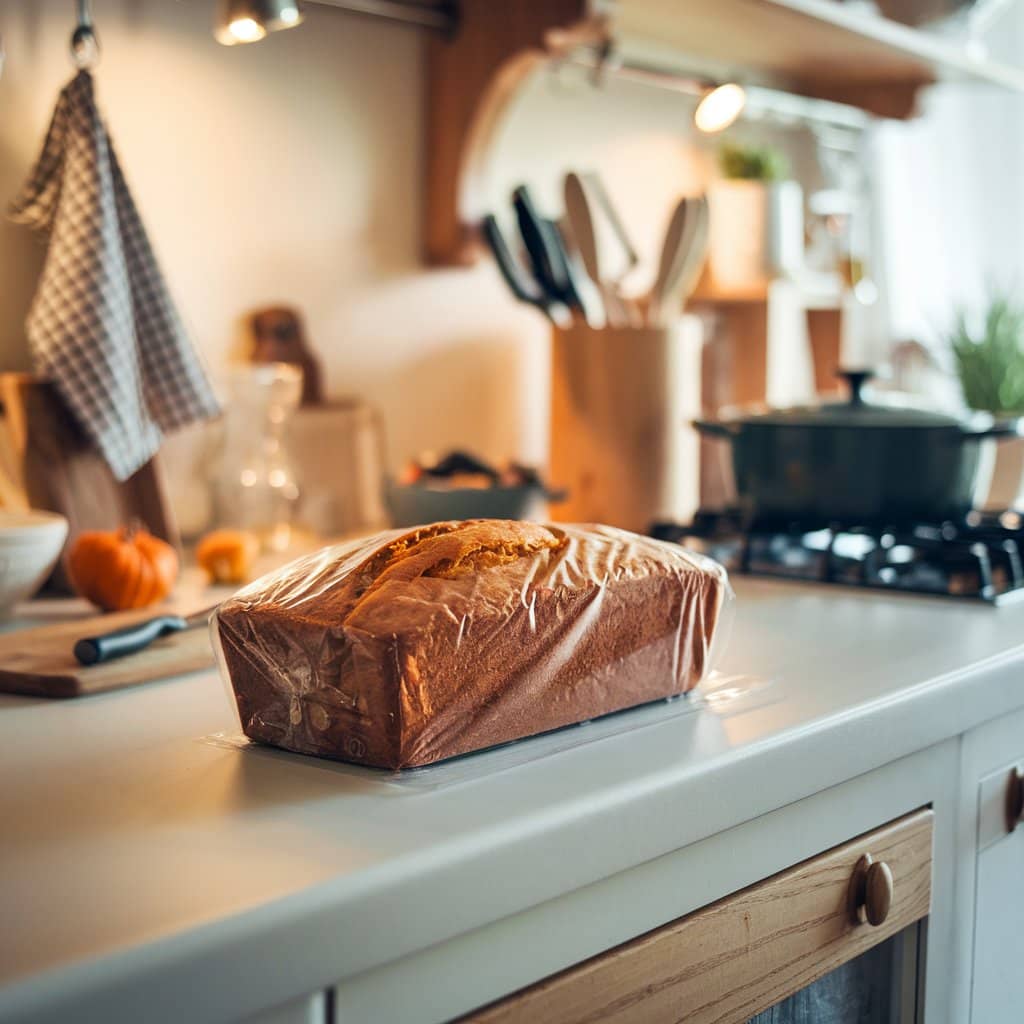
Freshness Timeline: Room Temperature
If you’re planning to enjoy your pumpkin-bread within a few days, storing it at room temperature is your best bet. When kept in a cool, dry place (like your kitchen counter), pumpkin-bread will stay fresh for about 2 to 4 days.
But here’s the catch: it needs to be wrapped properly. Leaving it exposed to air will dry it out faster than you can say “pumpkin spice.” Use plastic wrap or aluminum foil to keep it moist and delicious.
“Pumpkin bread is like a sponge—it soaks up moisture from the air, but it can also lose it just as quickly. Proper wrapping is key to keeping it fresh.”
Freshness Timeline: Refrigerated
If you want your pumpkin-bread to last a bit longer, the fridge is your friend. When stored in an airtight container or tightly wrapped in plastic, pumpkin-bread can stay fresh in the refrigerator for up to 1 week.
However, refrigeration can sometimes dry out baked goods, so make sure it’s sealed tightly to lock in moisture. If you notice it’s starting to dry out, a quick zap in the microwave can bring back some of that softness.
Freshness Timeline: Frozen
Got a lot of pumpkin-bread and don’t want it to go to waste? Freezing is the way to go! When stored properly in the freezer, pumpkin-bread can stay fresh for up to 3 months.
Here’s how to do it: wrap the bread tightly in plastic wrap, then place it in a freezer-safe bag or container. When you’re ready to enjoy it, let it thaw at room temperature or warm it up in the oven for a freshly baked feel.
Factors That Affect Pumpkin Bread Freshness
Not all pumpkin-bread is created equal. Several factors can influence how long it stays fresh. Let’s take a closer look:
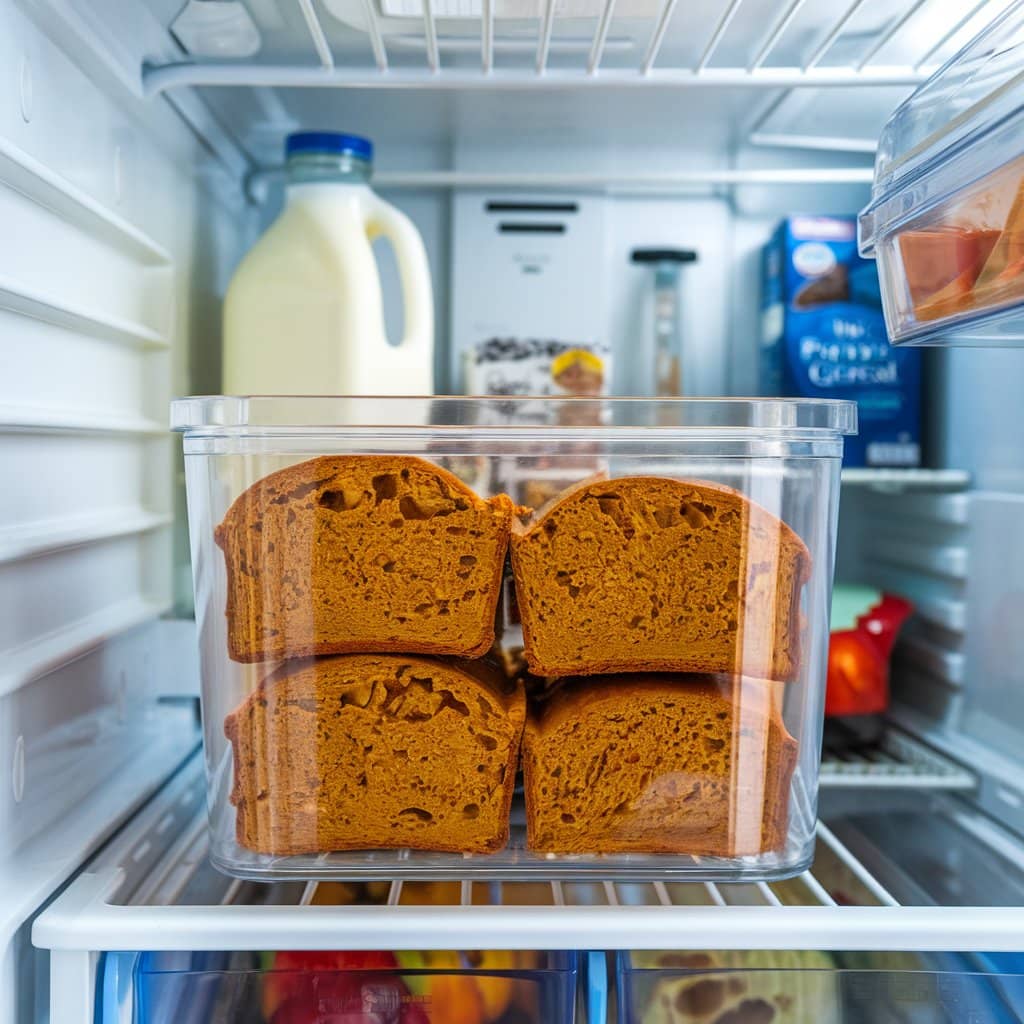
Ingredients Used in Pumpkin Bread
The ingredients you use can make a big difference in how long your pumpkin-bread stays fresh. For example, bread made with more oil or butter tends to stay moist longer than low-fat versions. Similarly, adding ingredients like raisins, nuts, or chocolate chips can affect its shelf life. Nuts, for instance, can go rancid over time, so keep that in mind if you’re planning to store your bread for a while.
Storage Conditions and Environment
Where and how you store your pumpkin-bread plays a huge role in its freshness. Humidity, temperature, and exposure to air can all impact how quickly it dries out or spoils. A cool, dry place is ideal for short-term storage, while the fridge or freezer is better for longer periods.
Moisture Content and Texture
Pumpkin-bread is naturally moist, thanks to the pumpkin puree and other wet ingredients. However, this moisture can also make it more prone to mold if not stored properly. On the flip side, if it dries out, it can become crumbly and unappetizing. Balancing moisture is key to keeping your bread fresh and delicious.
Common Problems with Pumpkin Bread Freshness
Even the best bakers run into issues with pumpkin-bread freshness. Here are some common problems and how to tackle them:
Problem: Pumpkin Bread Dries Out Quickly
There’s nothing sadder than cutting into a slice of pumpkin-bread only to find it’s dry and crumbly. This usually happens when the bread is exposed to air for too long.
Solution: Wrap your bread tightly in plastic wrap or aluminum foil as soon as it cools. You can also store it in an airtight container to lock in moisture.
Problem: Pumpkin Bread Becomes Moldy
Mold is the enemy of all baked goods. Pumpkin-bread, with its moist texture, is especially vulnerable if left in a warm, humid environment.
Solution: Store your bread in a cool, dry place or in the fridge if you’re not planning to eat it within a few days. If you see any signs of mold, it’s best to toss the loaf to avoid any health risks.
Problem: Pumpkin Bread Loses Flavor Over Time
Over time, the spices in pumpkin-bread can lose their punch, leaving you with a bland loaf.
Solution: To keep the flavors vibrant, store your bread in an airtight container and consider adding a bit more spice to your recipe if you plan to store it for longer periods.
Solutions to Keep Pumpkin Bread Fresh Longer
Now that we’ve covered the common problems, let’s talk about how to keep your pumpkin-bread fresh and delicious for as long as possible. After all, no one wants to deal with dry, moldy, or flavorless bread. Here are some tried-and-true solutions:
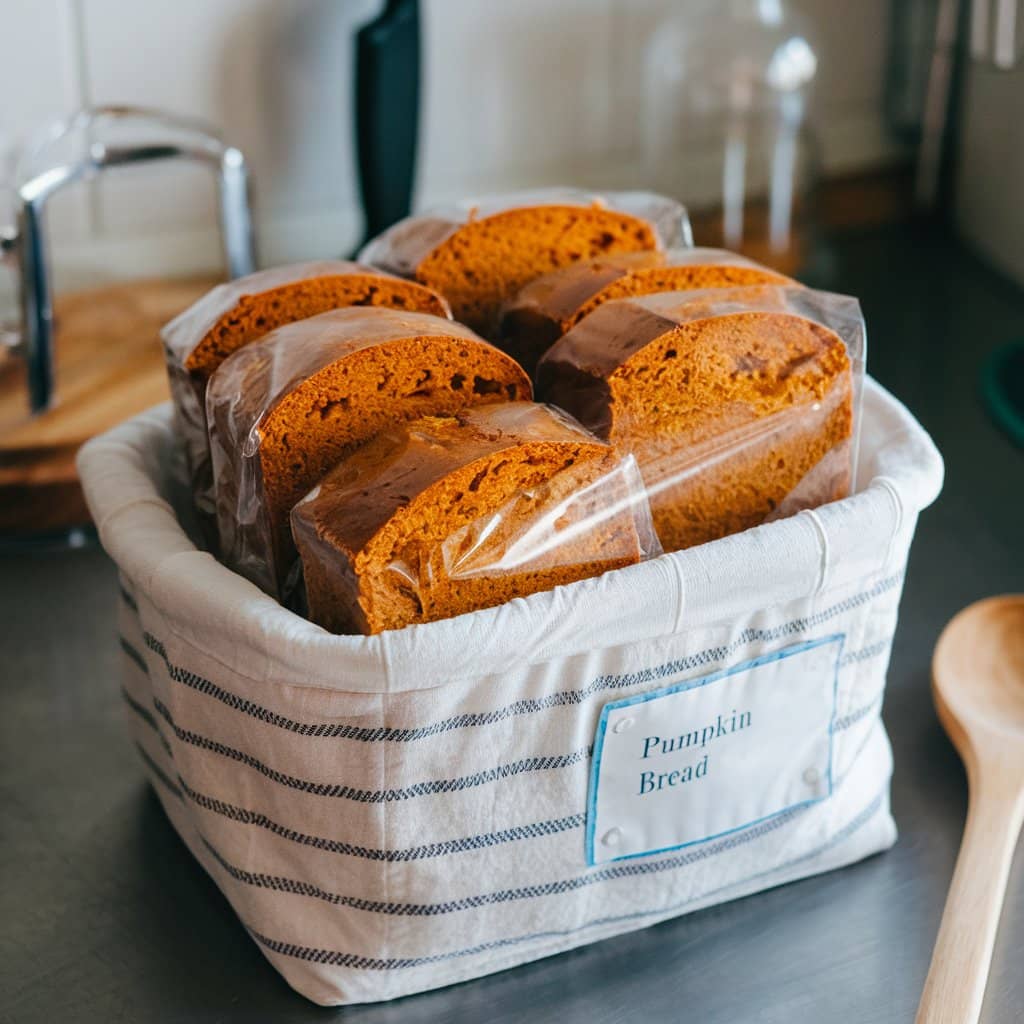
Solution: Proper Wrapping and Storage Techniques
The way you wrap and store your pumpkin-bread can make or break its freshness. Here’s the golden rule: keep it airtight.
- Plastic Wrap or Aluminum Foil: As soon as your pumpkin-bread has cooled, wrap it tightly in plastic wrap or aluminum foil. This creates a barrier that locks in moisture and keeps air out.
- Bread Box: If you have a bread box, it’s a great option for short-term storage. Just make sure the bread is wrapped first to prevent it from drying out.
“Think of your pumpkin-bread like a treasure—it needs to be protected from the elements to stay in perfect condition.”
Solution: Using Airtight Containers
Airtight containers are a game-changer for keeping pumpkin-bread fresh. They’re especially useful if you’re storing the bread in the fridge or freezer.
- Room Temperature: If you’re storing the bread at room temperature, place it in an airtight container after wrapping it. This double layer of protection ensures it stays moist.
- Refrigerator or Freezer: For longer storage, use a heavy-duty airtight container to prevent freezer burn or absorption of fridge odors.
Solution: Refrigeration vs. Freezing
Deciding whether to refrigerate or freeze your pumpkin bread depends on how quickly you plan to eat it.
- Refrigeration: If you’ll finish the bread within a week, the fridge is your best bet. Just remember to wrap it tightly to prevent it from drying out.
- Freezing: For long-term storage (up to 3 months), freezing is the way to go. Slice the bread before freezing so you can thaw only what you need.
How to Tell If Pumpkin Bread Has Gone Bad
Even with the best storage practices, pumpkin bread won’t last forever. Here’s how to tell if it’s time to say goodbye to your loaf:
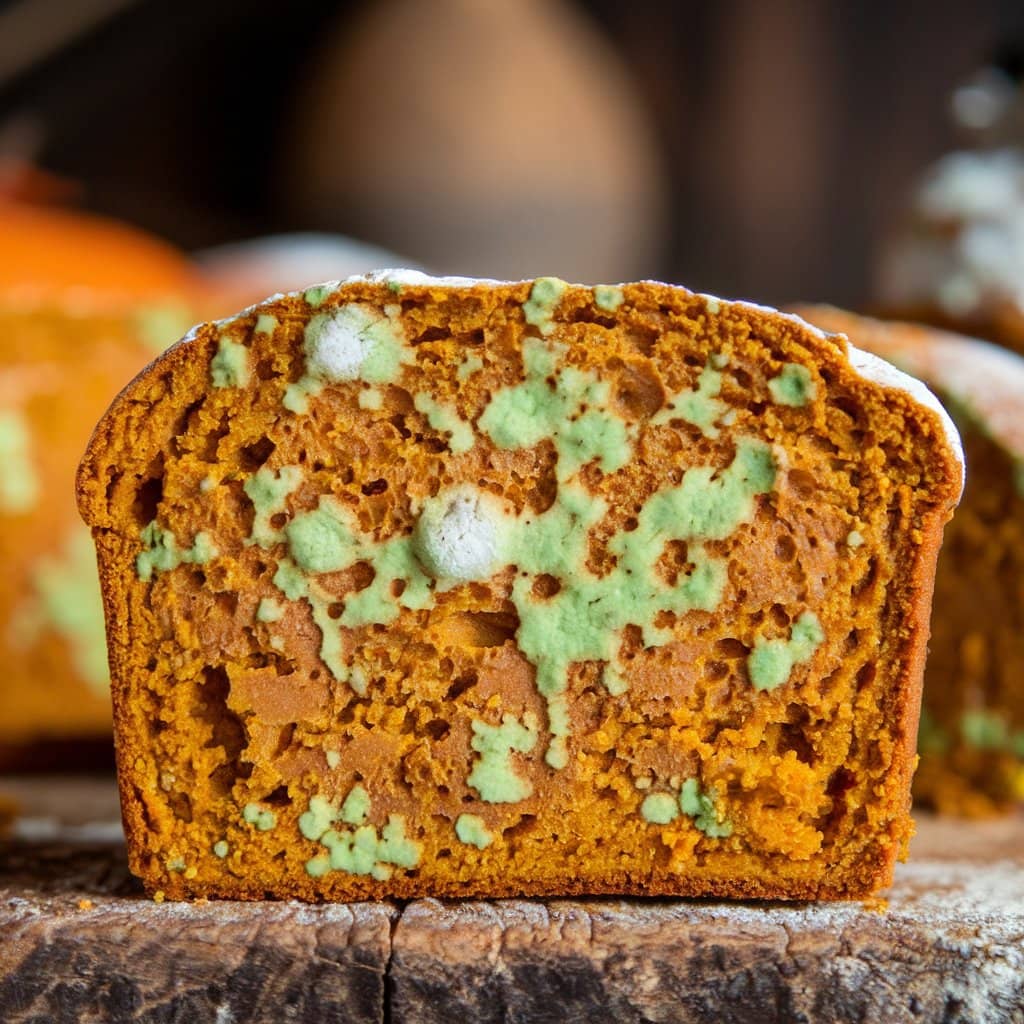
Signs of Spoilage in Pumpkin Bread
- Mold Growth: This is the most obvious sign. If you see any green, white, or black spots on the bread, it’s time to toss it.
- Off Smells: Fresh pumpkin bread smells sweet and spicy. If it smells sour, musty, or just “off,” it’s likely spoiled.
- Strange Textures: If the bread feels slimy or excessively dry and crumbly, it’s past its prime.
Mold Growth and Discoloration
Mold is the biggest red flag when it comes to spoiled pumpkin bread. It can appear as fuzzy spots or discolored patches. Even if you only see a small amount of mold, it’s best to throw the entire loaf away. Mold spores can spread quickly, and some types can be harmful if ingested.
Off Smells and Strange Textures
Your nose knows! If your pumpkin bread smells funky or has an unusual texture, trust your instincts. Spoiled bread might feel sticky, slimy, or overly dry. When in doubt, it’s better to be safe than sorry.
Tips for Extending the Shelf Life of Pumpkin Bread
Want to keep your pumpkin bread fresh for as long as possible? These tips will help you get the most out of your loaf:
Add Moisture-Retaining Ingredients
The key to moist pumpkin bread is in the ingredients. Adding moisture-rich components can help extend its freshness:
- Pumpkin Puree: This is the star ingredient that keeps pumpkin bread moist. Make sure you’re using pure pumpkin puree, not pumpkin pie filling.
- Applesauce or Yogurt: These can be used as substitutes for oil or butter, adding moisture without compromising flavor.
Avoid Overbaking
Overbaking is a common mistake that can dry out your pumpkin bread. To avoid this, follow these tips:
- Check for Doneness: Insert a toothpick into the center of the bread. If it comes out clean or with a few crumbs, it’s done.
- Set a Timer: Baking times can vary depending on your oven, so keep an eye on the clock and check the bread a few minutes before the recommended time.
Store in Cool, Dry Places
Where you store your pumpkin bread matters. Here’s how to choose the best spot:
- Room Temperature: Keep it in a cool, dry place away from direct sunlight or heat sources.
- Refrigerator: If you’re storing it in the fridge, make sure it’s wrapped tightly to prevent it from absorbing odors.
How to Revive Stale Pumpkin Bread
So, your pumpkin bread has gone a bit stale. Don’t worry—it’s not a lost cause! Here are some quick fixes to bring it back to life:
Quick Fixes for Dry Pumpkin Bread
- Microwave Method: Wrap a slice of pumpkin bread in a damp paper towel and microwave it for 10-15 seconds. The steam will help rehydrate the bread.
- Oven Method: Preheat your oven to 300°F (150°C). Wrap the bread in aluminum foil and warm it for 5-10 minutes. This will restore some of its moisture.
Reheating Techniques for Maximum Freshness
- Toaster Oven: For a quick and easy fix, pop a slice in the toaster oven for a minute or two. This will give it a warm, freshly baked feel.
- Steam Method: Place a slice of pumpkin bread in a steamer basket over boiling water for a few seconds. This works wonders for reviving dry bread.

